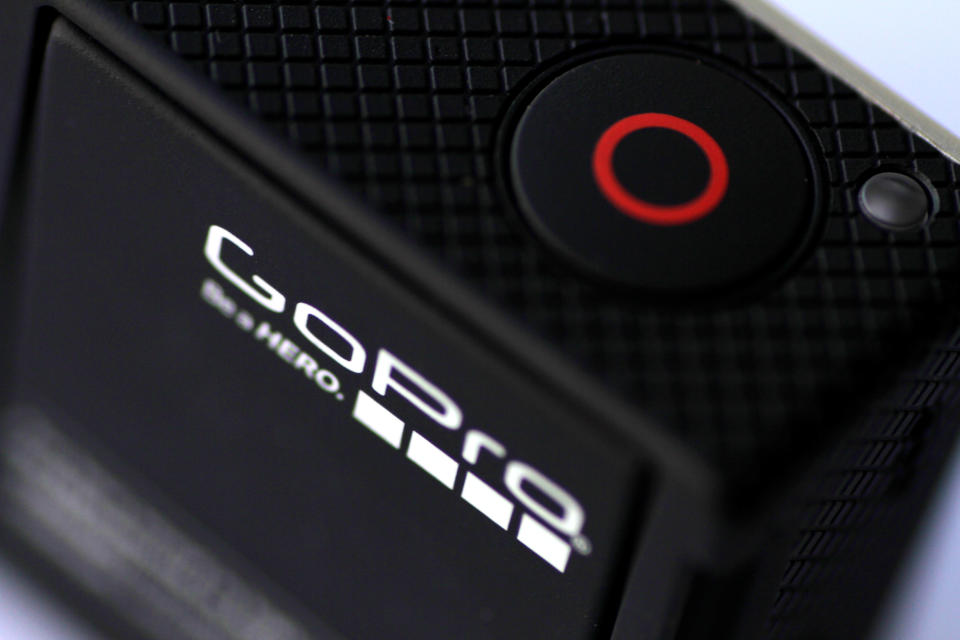Amazon is slowly strangling brand names

If you search for a GoPro on Amazon, the results will display a few GoPro (GPRO) action cameras between $199 and $699. It will also show the “Akaso EK7000 4K WiFi Sports Action Camera” for $68.
The Akaso has four out of five stars from 6,813 reviews, a rating that is tied for the best GoPro with many times more reviews. It has a “best seller” badge. With compatible accessories and specifications similar to the GoPro, it’s no wonder the company has experienced woes of late, and a collapse of its once $86 stock to $5. A GoPro, like many electronics and other items, has now become a commodity thanks to the rise of internet selling platforms like Amazon and eBay.
Genericization is nothing new. There was a time when Kleenex meant a facial tissue in a box that says “Kleenex.” Thermoses, ChapSticks, Band-Aids and Velcro were trademark brand names that were all once the go-to products for the items they represent before their success robbed them of their brand value.
The scope and efficiencies of the internet have taken that genericization a step further, turning its effect on products into full-scale commodification. In a physical store, an aisle would have a store brand generic adjacent to a brand name. But on Amazon, for example, a brand has to compete with not one but dozens of cheaper off-brand options due to the ease of getting on the selling platform, many of which have hundreds of reviews. (And if not, there’s the friendly return policy.)
“You look online and it’s almost impossible to differentiate yourself,” said Alexei Agratchev, the CEO of RetailNext, which provides analytics services to brick and mortar businesses. Agratchev has seen many retailers express significant concerns about online and seen it fail to be profitable due to intense competition.
“You have a product everyone wants you can’t buy anywhere,” Agratchev said. “The only two things you can do is build a unique concept and deep community.”
If a product or brand does not give a customer a strong reason to buy it through loyalty, unparalleled quality, or consumer desire to publicly associate themselves with a brand — a type of conspicuous consumption — it is forced to jump into the rat race of online marketplaces. Browsing through search results for “headphones” or “umbrella” a consumer might be choosing between a dozen products that appear to be all made from the same schematics and maybe even the same manufacturer.
In the end, this process results in an untold number of products becoming commodities, with consumers making the decision to buy purely based on price, knowing that the wheat will rise to the top of search and the chaff will fall, putting a “good choice” that has a thousand good reviews at the top. Often, Amazon will even affix a virtual badge to a result that says “Amazon’s Choice,” and the company has even gone so far as to go after this market themselves by providing their own “Amazon Basics” line of stuff.
Casperism, Whole Foods 365 and going brandless
For certain “commoditized” items, like a phone case, there is little benefit for its maker to spend money on traditional brand marketing, especially if similar products all function the same. There’s actually a benefit on the other side: Not spending dollars on marketing helps prices fall even further.
Consumers who play into this sense of commodification and simply want something that “works,” not a big brand name that spends a lot of money on marketing, has led to a new ethos of brands. Casper, a company that sells mattresses and other bed-related products, was able to body-slam the mattress business, disrupting the name brands like Tempurpedic and Sealey by offering a product that was essentially billed: “mattress in a box.” (However, Casper leaned into this simplification image aggressively with big-budget marketing campaign.)
As a brand, positioning yourself as somewhat of a generic has some serious cache. Fewer options and frills is a signifier to consumers that the fat has been trimmed, and the product is essentially a “standard.” There is comfort in taking a breather from name brands; in many cases it’s exhausting to make a decision of which brand of battery or iPhone charging cable to buy, when all we want is a product that gets a job done for a good price.
This, of course, is part of the appeal of Whole Foods and its 365 house brand. Unlike products on Amazon, which are vetted by copious user reviews, purchase data, and more, products are vouched for simply by its 365 packaging. But the commoditization effect is much the same. You don’t want to weigh the pros and cons and worry about which brand of tortilla chip or grainy mustard to get? No problem, someone’s done it for you already.
These attitudes, perhaps brought on by brand fatigue or simply a frugal mindset are everywhere and spreading to areas that have long been strongholds of brand loyalty. Millennials, Wharton found, view cars in a completely different light than their boomer parents, viewing cars dispassionately and pragmatically (“car-as-commodity”), simply as a means of getting from point A to point B, not the distillation of one’s personality in a vehicle.
There’s something about being offered simple brandless things, so long as the quality has been vetted by a system. It’s no wonder consumers don’t mind commodification.
Ethan Wolff-Mann is a senior writer at Yahoo Finance focusing on consumer issues, tech, and personal finance. Follow him on Twitter @ewolffmann.
This story is a part of Yahoo Finance Presents: The Retail Revolution, March 5-9, 2018.
